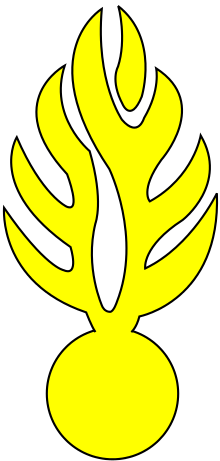Gendarmerie
The gendarmerie means either the place where gendarmes are stationed or a military armed force. The gendarmerie is part of the army. In places where gendarmes are deployed outside, they also have a provost function.

Name
changeThe term gendarme comes from the old medieval French gens d'armes. In English, it can be translated as men-at-arms. In Italy, they are called carabinieri. In first use, a troop of horsemen equipped with a carbine.[1]
Functions
changeLike the police, it has a role in road safety and surveillance of military places. The gendarmerie also provides mountain rescue capability. In conflict zones, the gendarmerie's function is the restoration of law and order as a provost unit.[2] In addition to the police, the gendarmerie has military equipments such as armored transport.
French influence
changeThe use of military units for civilian police is common to many eras and cultures. Belgium and Austria had gendarmeries (Royal Guard), but they merged with civilian police. Many former French colonies, particularly in Africa, have kept gendarmeries. The common symbol of the gendarmerie is the inflamed grenade. This symbol was used first by the French gendarmerie.
References
change- ↑ Lioe, Kim Eduard (3 December 2010). Armed Forces in Law Enforcement Operations? - The German and European Perspective (1989 ed.). Springer-Verlag Berlin Heidelberg. pp. 52–57. ISBN 978-3-642-15433-1.
- ↑ "CAHIER2". gipri.ch (in French). 2018-12-07. pp. 17–64. Retrieved 2019-02-02.
Bibliography
change- Arcudi, Giovanni; Michael E. Smith (2013). The European Gendarmerie Force: a solution in search of problems?. European Security. Vol. 22. p. 1-20. doi:10.1080/09662839.2012.747511. S2CID 153388488.
- Gendarmes and the State in Ninenteenth-Century Europe. New York: Oxford University Press. 1999. ISBN 0-19-820798-0.